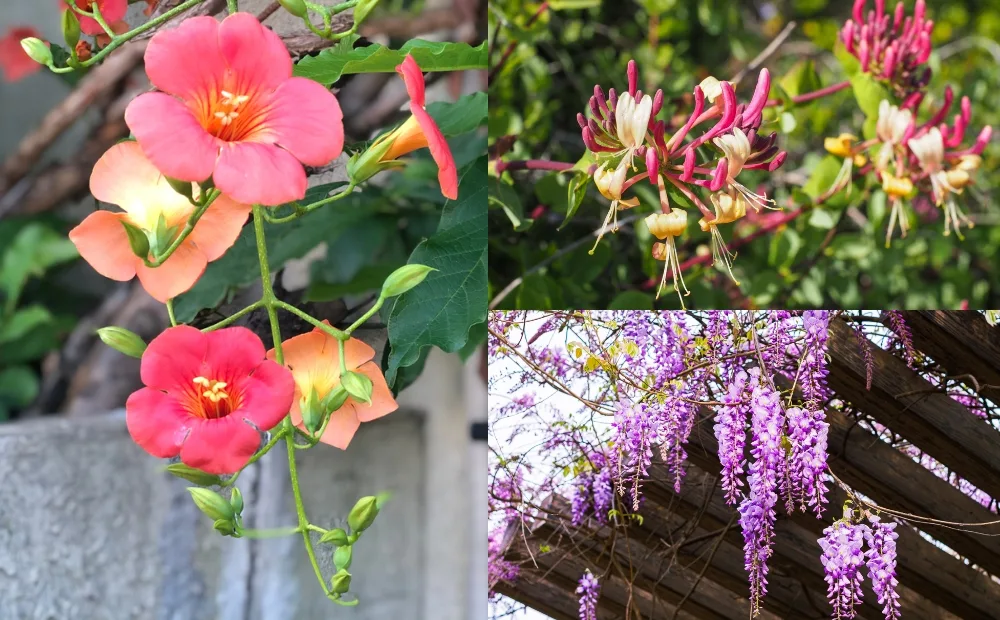
There are a number of reasons why you might wish to grow climbing plants and flowering vines.
You might wish to add them to a wall or fence to improve your view. You might want them to clad a pergola or porch, to add interest to the trunk of a mature tree, or to create a shady arbor to enjoy.
The best plants are always those that are beautiful and useful. Which ones are best for you will, of course, depend on where you live.
But to inspire you to make your own choices, here are 25 excellent climbing plants and flowering vines to consider:
1. Bittersweet (Celastrus scandens)
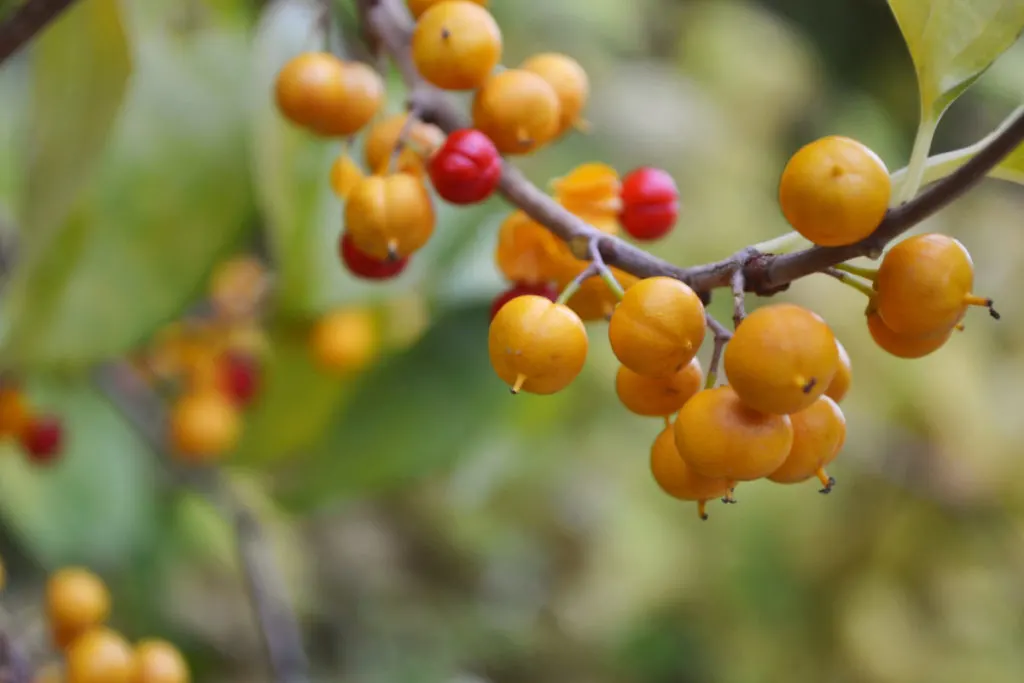
This fast growing, deciduous climber is one interesting choice. The plants bear clusters of greenish-yellow flowers in June followed by orange-yellow fruits which split open, revealing the scarlet seeds within.
It is poisonous, but great for attracting wildlife.
If you have plenty of space, and want a rampant climber to ascend an old tree, this could be a good option to consider.
2. Boston Ivy (Parthenocissus tricuspidata)
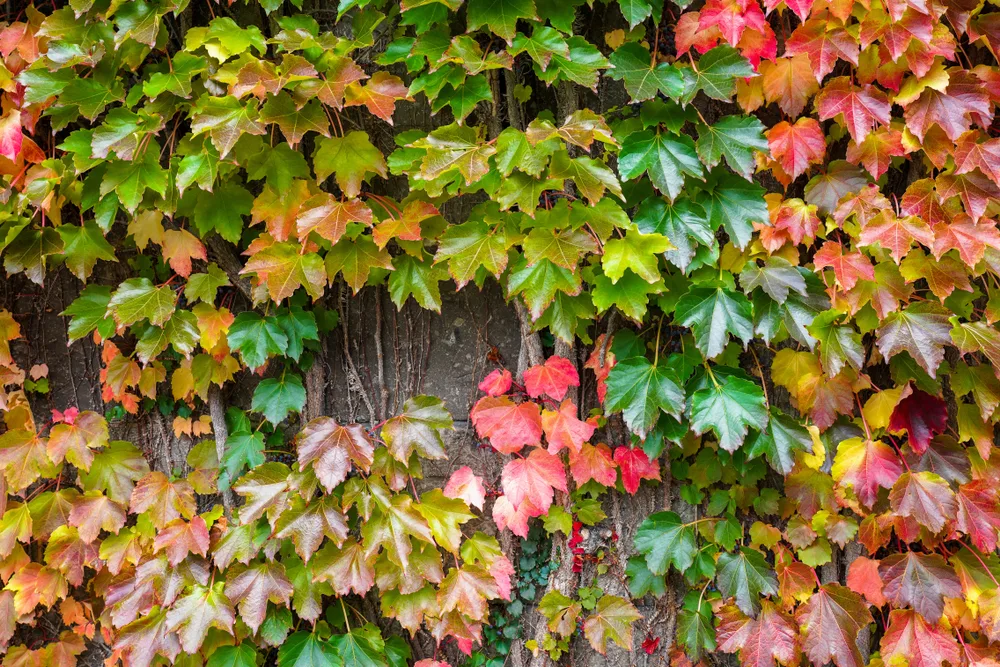
This rampant climbing plant is often seen cladding the sides of older buildings.
It grows very quickly, and must be pruned back to avoid doing damage to guttering. But if you want a suitable climber for a semi-shady spot, and want good coverage quickly, this could be a good option.
There are a number of hugely appealing ornamental varietals to consider.
3. Bougainvillea (Bougainvillea spectabilis)
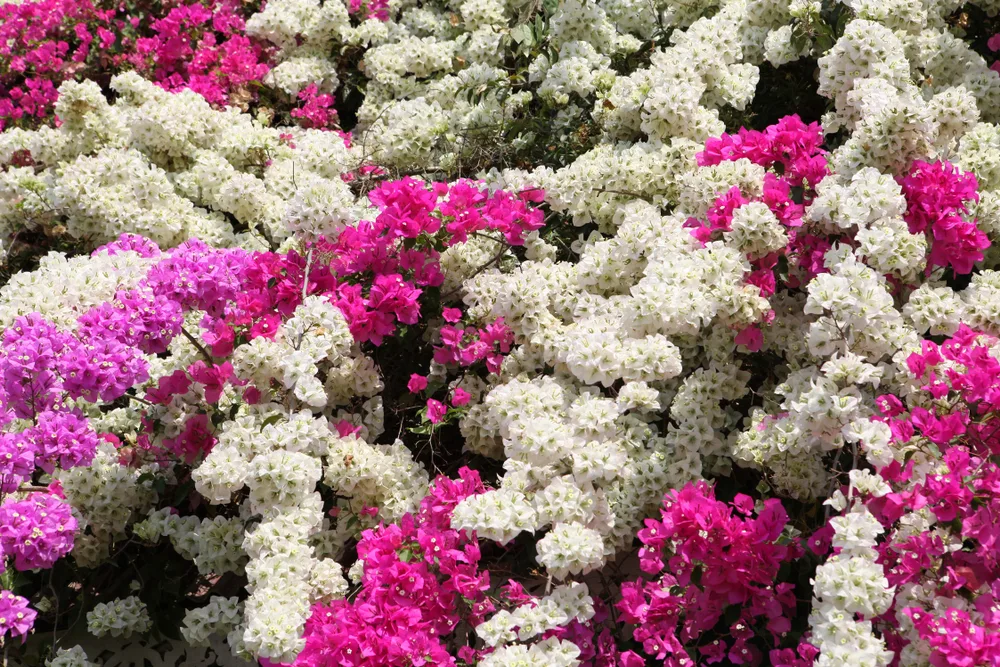
Native to south America, Bougainvillea has since been introduced to many other areas.
It grows into woody vines or shrubs that reach around 40ft in size in suitably warm climate zones. (zones 10-11).
Though many climates are not warm enough to support this plant, it is definitely worth considering if the climate allows it where you live.
Interestingly, the brightly colored white, orange, red, mauve, or purple ‘flowers’ of this plant are not actually flowers at all. Rather they are modified leaves, called bracts, that surround small, white and nondescript flowers.
4. Chayote (Sechium edule)
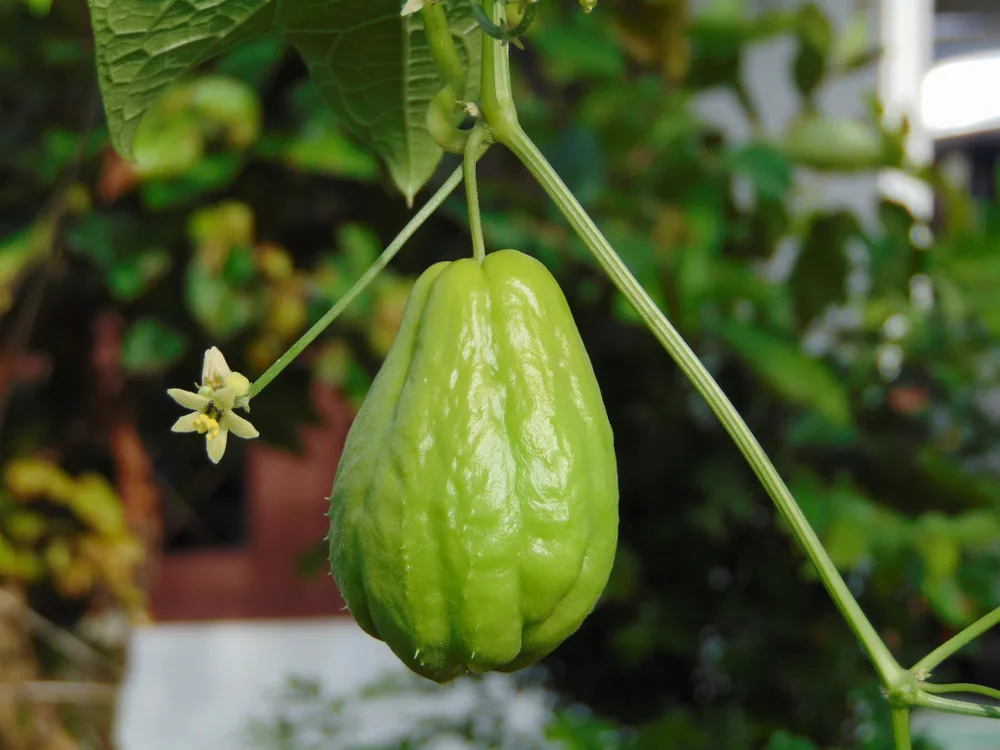
A relative of the squash and the cucumber, chayote is, like these and other similar plants, an edible vining plant. But chayote is interesting for its edible uses – you can eat the fruits like squash, and the tuber roots, vines and leaves are also all edible.
But this is also as an attractive ornamental plant, which looks great grown up a trellis or against a fence or other structure.
With support, it can grow up to 12m high. It has attractive heart-shaped leaves, and bears male and female flowers followed by the light green fruit.
5. Chocolate Vine (Akebia quinata)
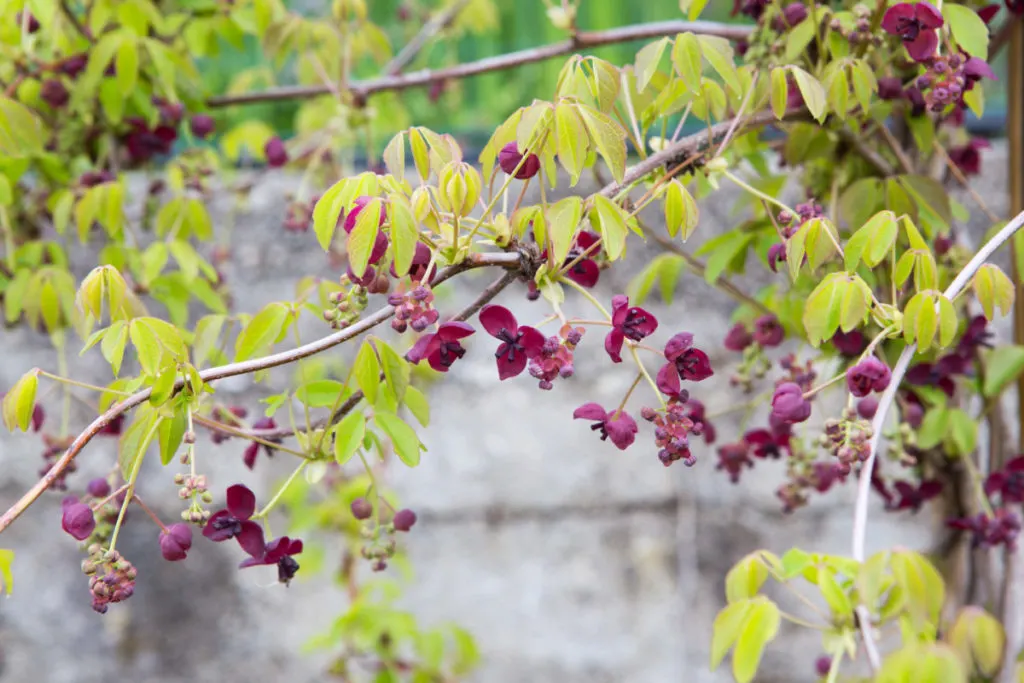
Native to East Asia, this deciduous climber has purple red flowers which bloom in the spring.
The plant is not self-fertile, but when provided with a pollination partner, can produce sweet but insipid fruits.
This is a plant that is relatively shade-tolerant, and can succeed on a north facing wall, though young growth is frost-tender.
The flowers are not only attractive, but also have an interesting fragrance, reminiscent of vanilla.
6. Clematis (Various Clematis spp.)
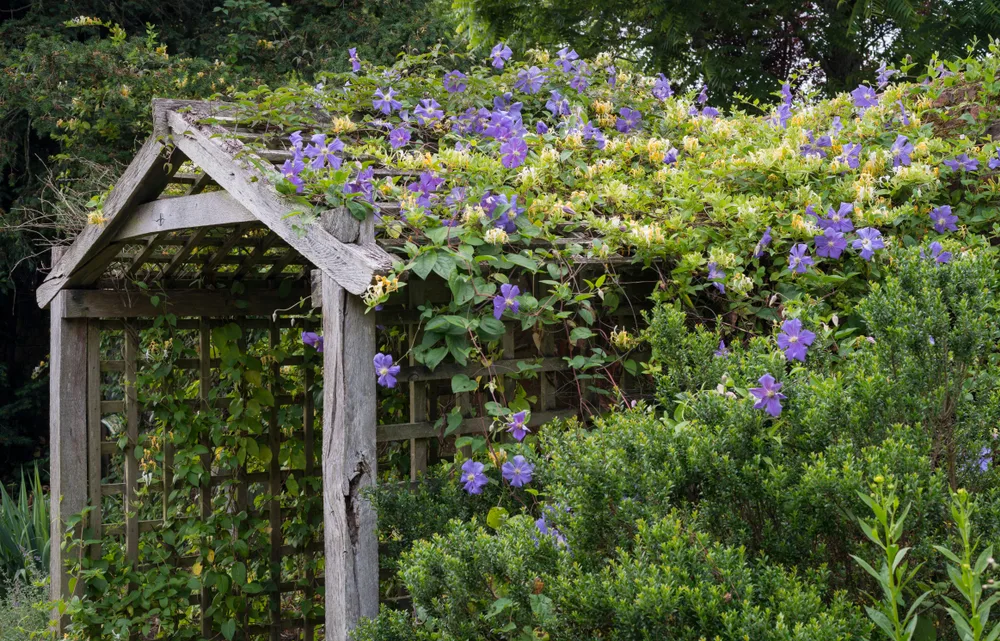
There are clematis plants to suit almost any situation. These climbing plants can work very well in many gardens, attracting wildlife and brightening up a range of spaces with their delightful blooms.
The many varieties are too numerous to mention. But there are options that work well in sun and in shade, and with a range of different soil types.
7. Climbing Hydrangea (Hydrangea petiolaris)
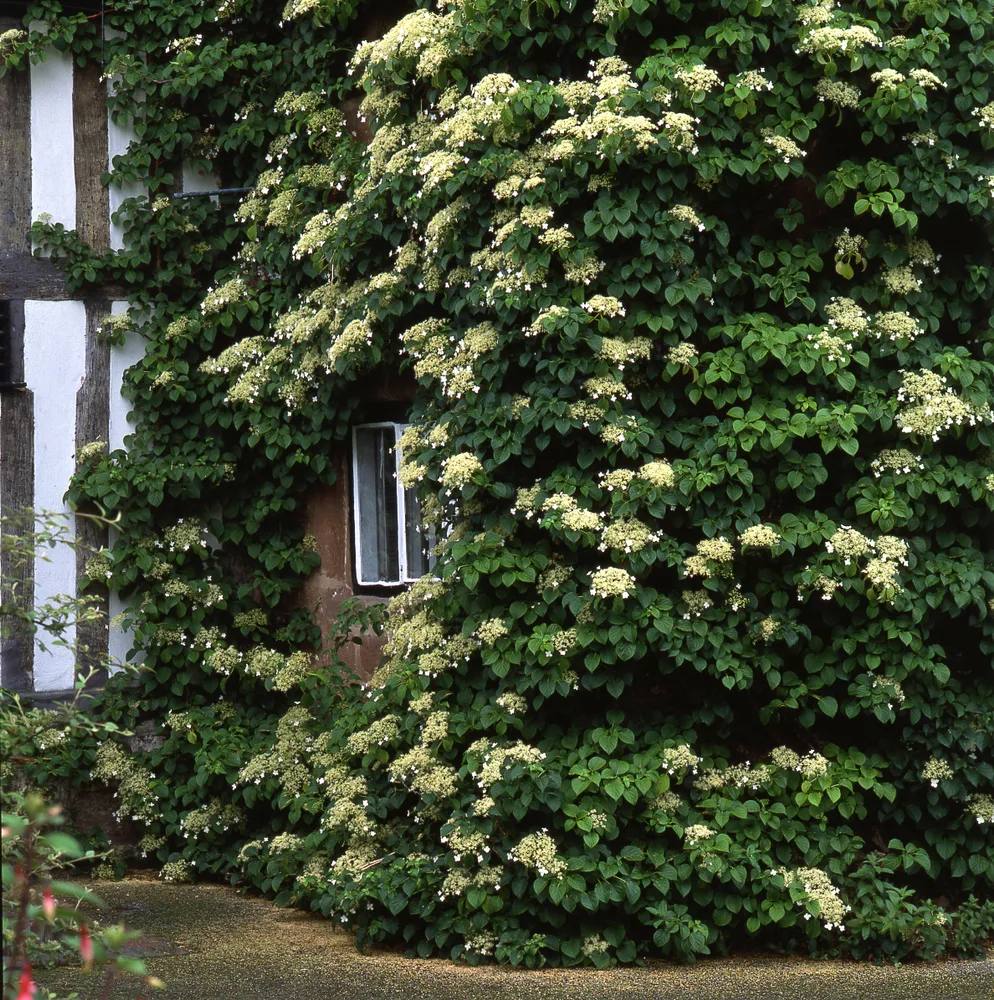
This type of hydrangea is native to east Asian woodlands and is sometimes treated as a subspecies of the related Hydrangea anomala.
Hydrangea anomala is somewhat smaller (growing up to 39ft in height) while this plant can grow up to 50ft in height in ideal conditions.
The dramatic flowers are borne in clusters of small, white flowers, which together form large, dramatic flower clusters up to nearly 10 inches in diameter.
8. Climbing Roses
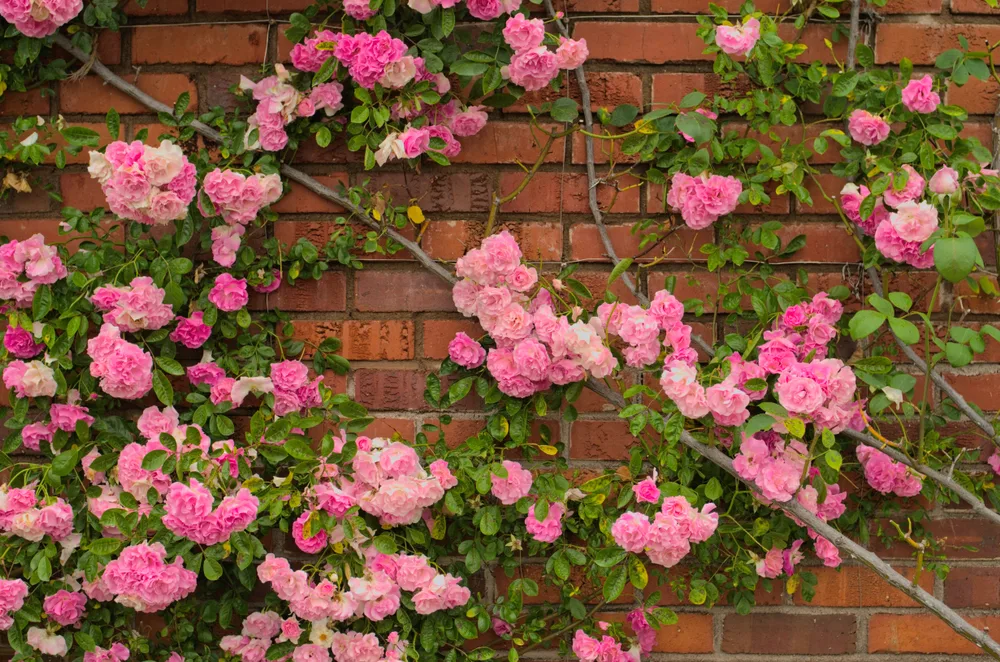
Like clematis, the rose family also provides a huge range of options suitable for many different gardens. There are both rambling and climbing roses ideal for a wide range of applications.
When choosing a rose, be sure to think about the growth habit, flower type and color, and environmental requirements of the options you are considering.
9. Dutchman’s Pipe (Aristolochia macrophylla)
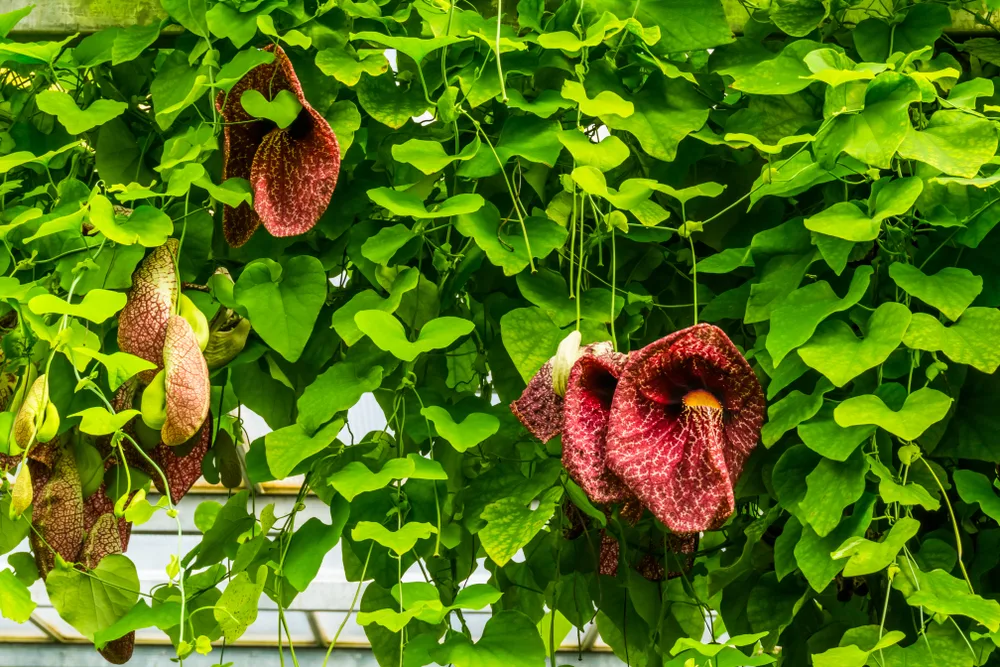
This vine is native to the eastern United States. It is found in the wild predominantly along the Cumberland and Blue Ridge Mountains, as well as in Ontario, Canada.
This vining plant can grow up to 30ft in height at quite a fast rate. It flowers in the summer with the distinctive blooms that give it its name.
The dark green leaves are great for providing shade and can quickly cover an arbor, sun porch or trellis. Another great thing about this plant is that it is a larval host for the pipevine swallowtail butterfly.
10. Grape Vine (Vitis)
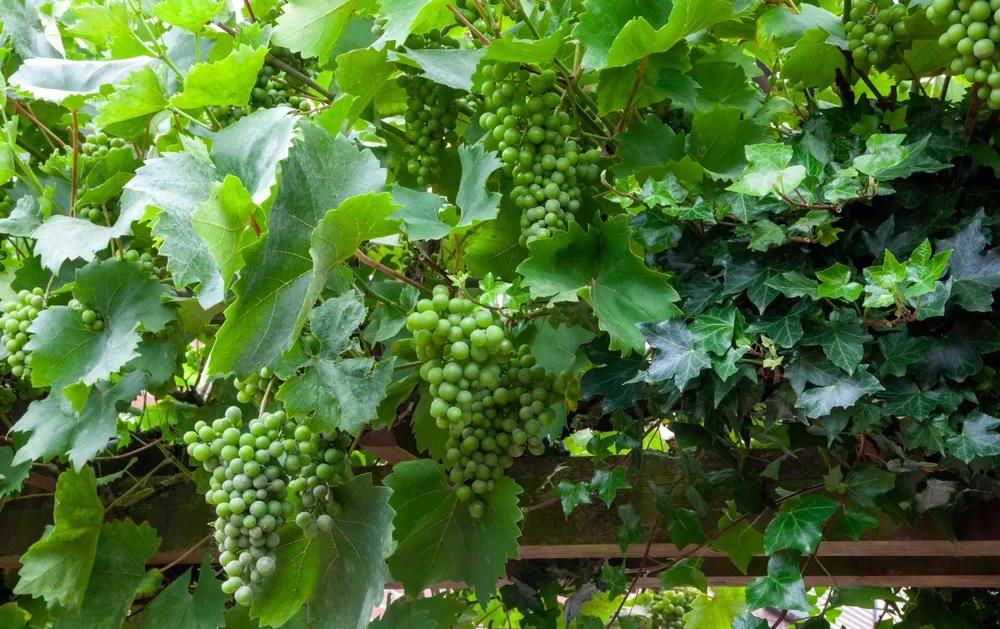
You might not be thinking about growing food. But cultivating grape vines can be a great idea in an ornamental garden too.
Grape vines can be extremely attractive and any edible yield of culinary grapes (or grapes for wines) is just an added benefit.
Many people choose to grow grapevines up and over a pergola covering an outdoors dining area, for example, to provide shade.
11. Groundnuts (Apios americana)
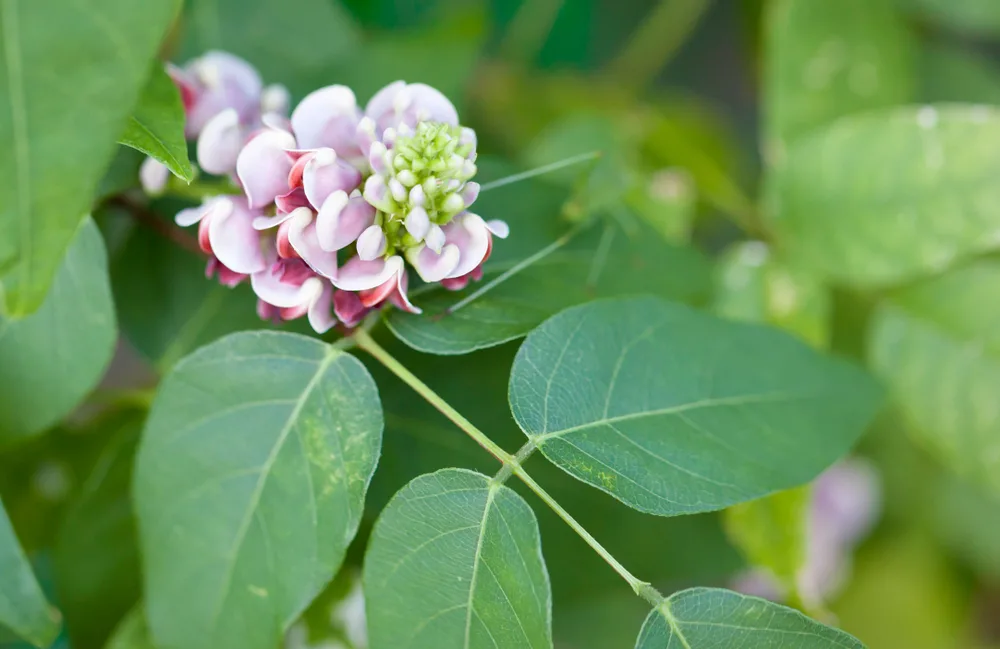
Another vine that can give an edible yield, though less well known, is Apios americana, also known as groundnuts, or hopniss.
This vine has edible beans and large edible tubers.
It grows up to 19.7ft long, and also has attractive flowers in pink, purple or reddish-brown hues. It will also attract beneficial wildlife to your garden, and is a host for the Epargyreus clarus butterfly.
12. Hardy Kiwi (Actinidia arguta)
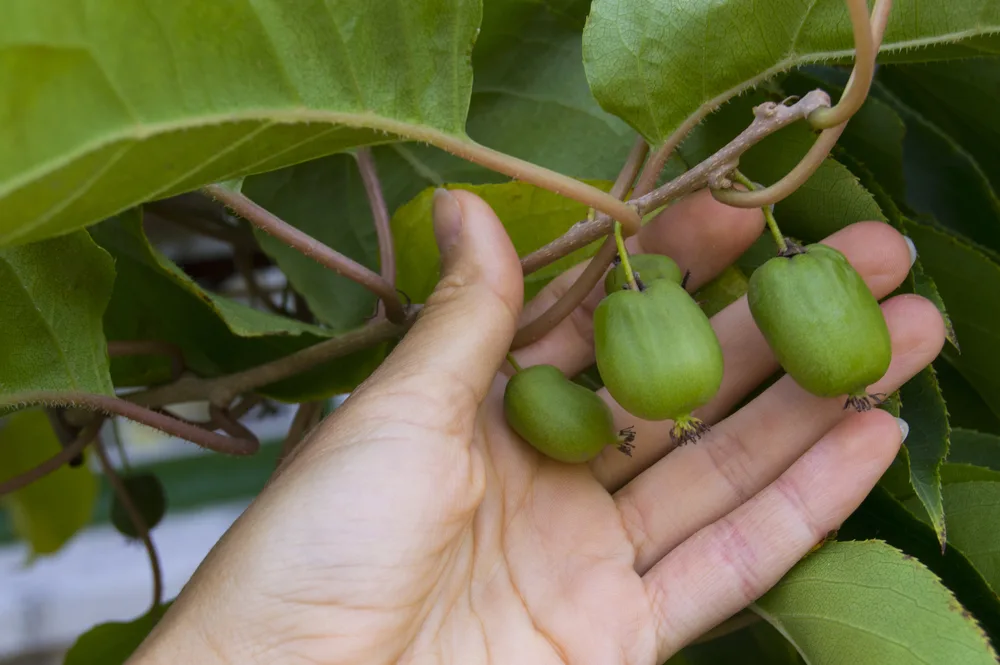
Native to East Asia, the hardy kiwi, also known as Tara vine, is a deciduous climber that will grow up to almost 50ft in height.
It is hardy and not frost tender. It provides a long period of interest – being in leaf from May through November, and flowers from June to July in full sun or semi shade.
The fruits are smooth skinned, unlike the kiwi, their relative, and the skin can be eaten with the fruits.
If you plan to grow just one, you will need a self-fertile cultivar, such as ‘Issai’.
13. Honeysuckle (Lonicera)
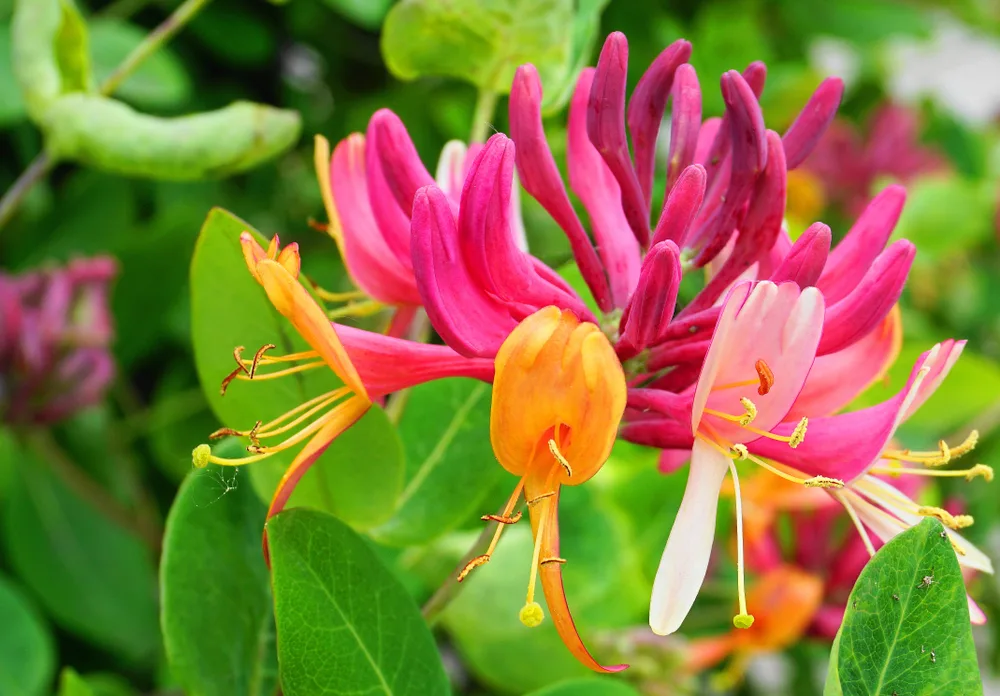
Beautifully fragrant, with lovely flowers, honeysuckle is a wonderful choice for many gardens.
This is a cottage garden favourite, and for good reason. There are a number of lovely cultivars to choose from.
14. Hops (Humulus lupulus)
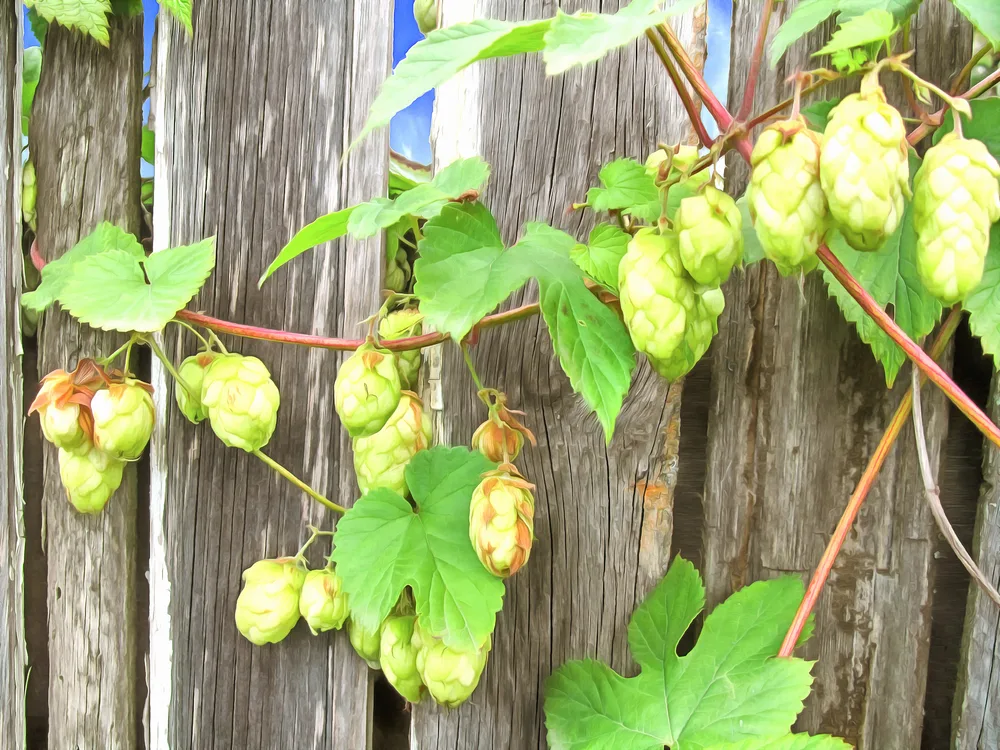
Hops is another popular vining plant, well known for its use in beer.
Yet in addition to being a useful plant for brewing, hops is also great as a decorative or ornamental plant, and is good for creating shade when grown up a garden structure.
15. Loofah (Luffa cylindrica)
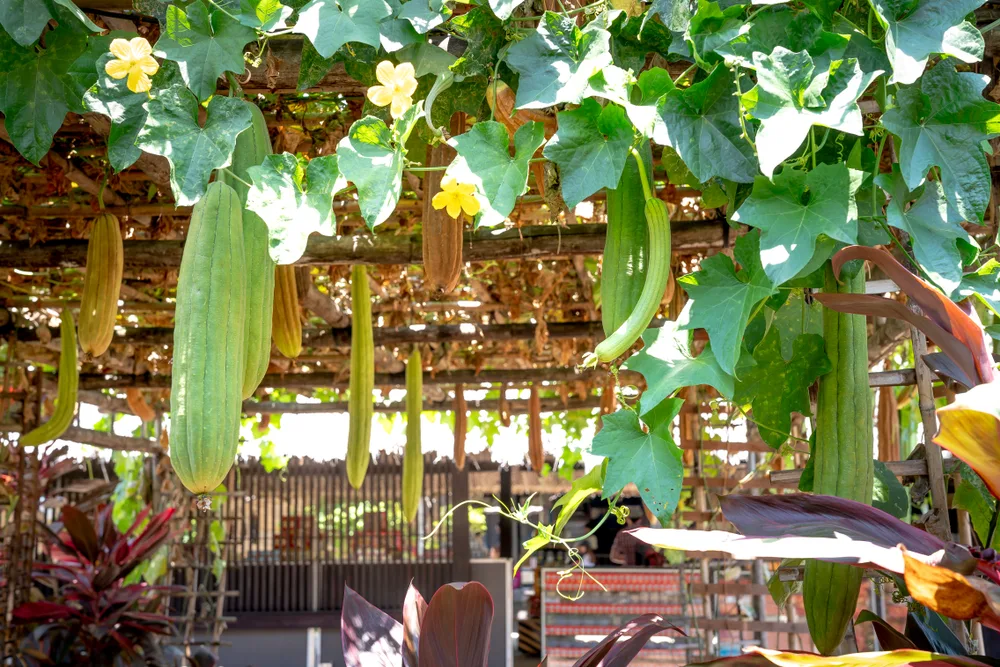
You may think of a loofah as a dried object used for scrubbing the skin when bathing. But you can also eat the loofah fruits when they are young.
This annual climber is also a great choice for many gardens, growing to around 50ft at a fast rate.
16. Malabar Spinach
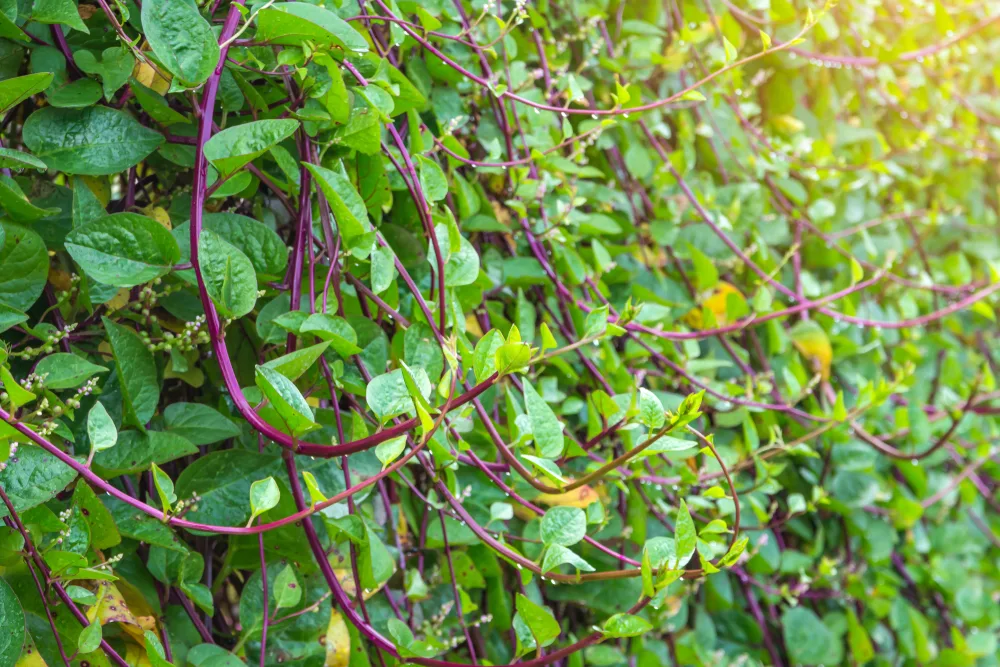
This perennial climber is a great multi-purpose plant to grow in a garden. It grows to around 30ft at a fast rate, though it is frost tender.
It flowers between May and September, and also provides an edible yield of leaves with a pleasant spinach flavour.
17. Moonflower (Ipomoea alba)
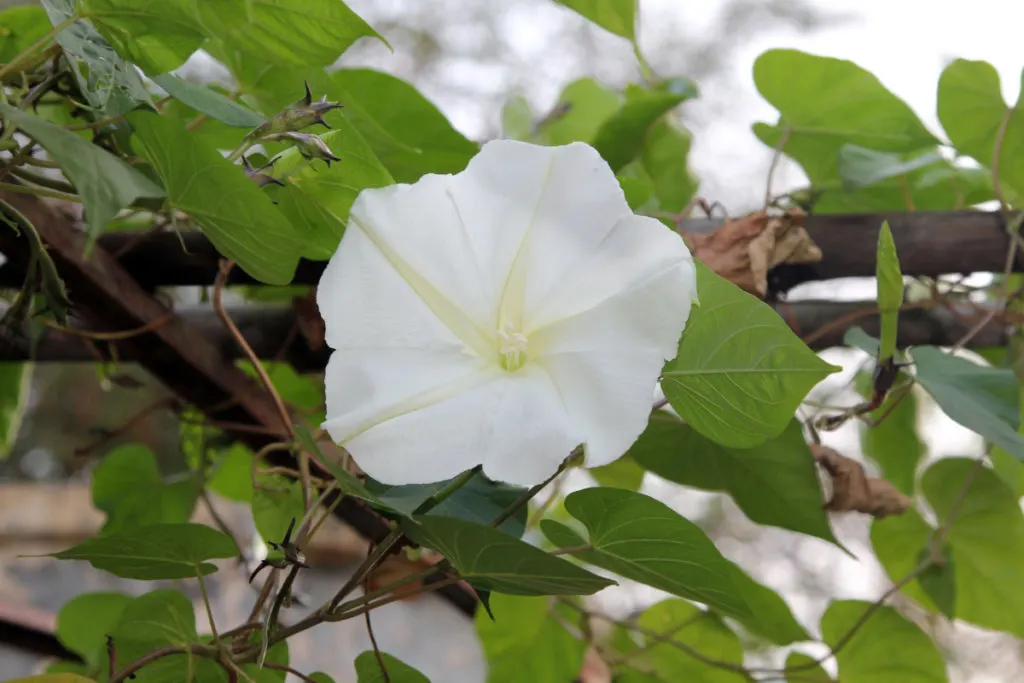
Tropical white morning glory, also known as moonflower, is in the Convolvulaceae family. It is an evergreen perennial climber that grows to around 33-33ft at a fast rate.
It is in leaf all year round and produces its beautiful white flowers from July to August.
18. Passion Flower (Passiflora)
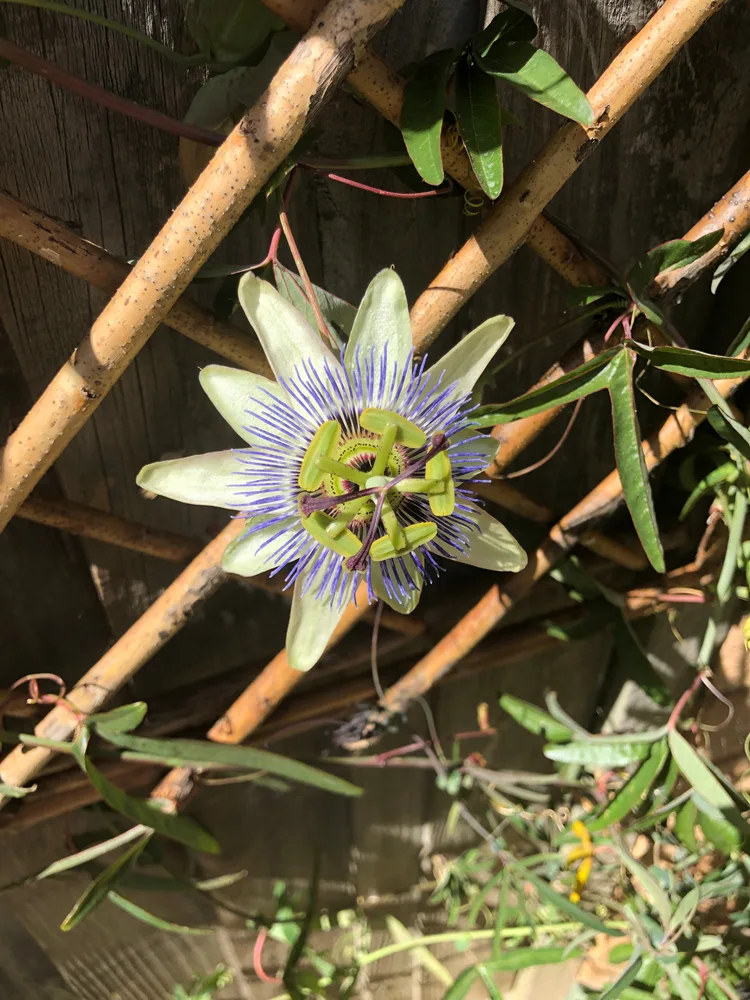
The passion flower has a range of different cultivars that are excellent climbers for the garden – giving any space a lush and exotic feel.
Passiflora caerulea, for example, is hardy in zones 9-11 and is not only attractive but also provides edible fruits.
Passiflora incarnata is suitable for zones 7-11, and Passiflora actinia is suitable for zones 8-11.
There are also a range of other passion flowers suitable for warmer climate zones.
19. Runner Bean (Phaseolus coccineus)
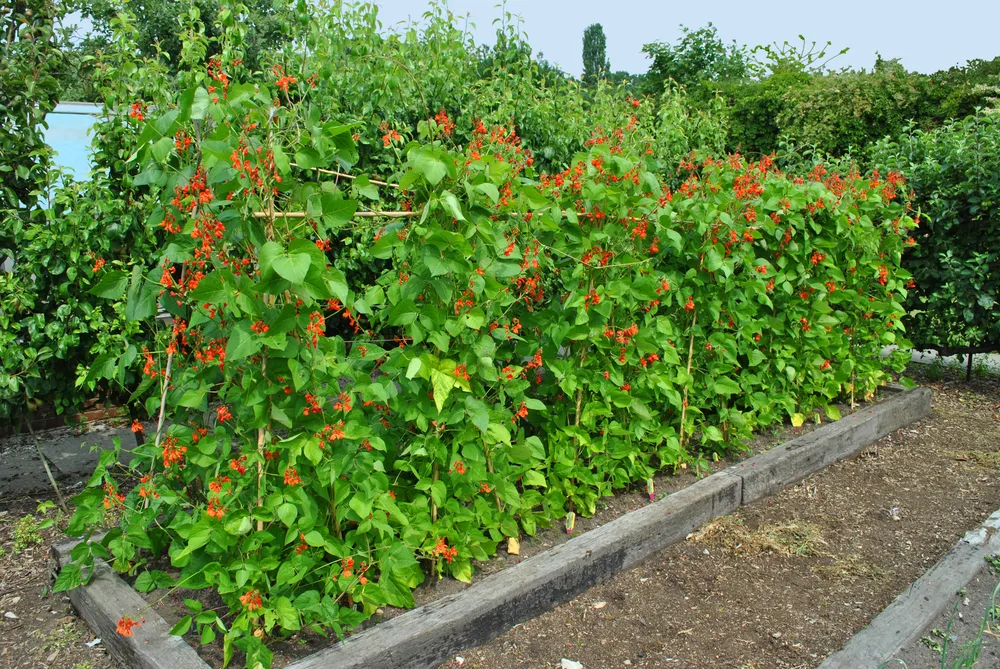
The runner bean may more commonly be grown in a vegetable plot. But the scarlet runner bean is also a wonderfully ornamental plant that could find a place in a flower garden too.
The long beans may just be a bonus, but in any garden, you can enjoy the long twining vines that wrap themselves round upright supports, and the vibrant and abundant summer flowers.
20. Star Jasmine (Trachelospermum jasminoides)
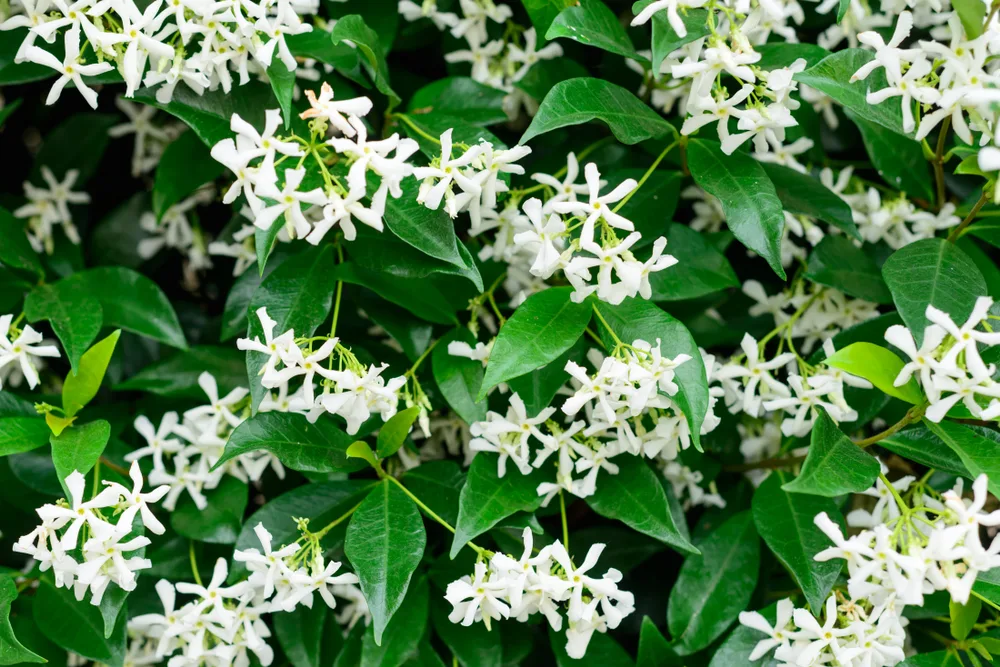
These are stunning evergreen climbing plants that bloom in late spring or early summer and then carry on blooming through the summer months.
They will keep their foliage all winter, and are great planted close to a door, window or seating area where you can enjoy the fragrance of the flowers later in the year.
The glossy leaves often turn a deep red in winter.
21. Sweetpea (Lathyrus odoratus or Lathyrus latifolius)
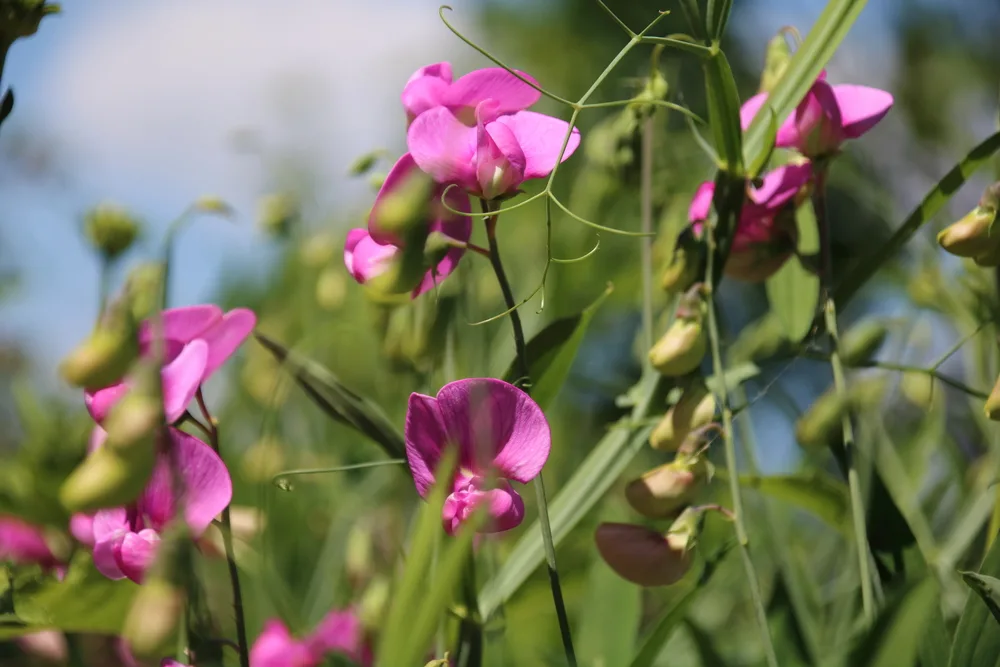
The sweetpea Lathyrus odoratus is an annual climber which is another great choice for both color and fragrance.
Many people list the sweetpea as one of their favourite flowers.
But for a perennial option for the dappled shade beneath a tree, for example, consider the perennial sweetpea, Lathyrus latifolius instead.
22. Trailing and Climbing Nasturtiums (Tropaeolum)
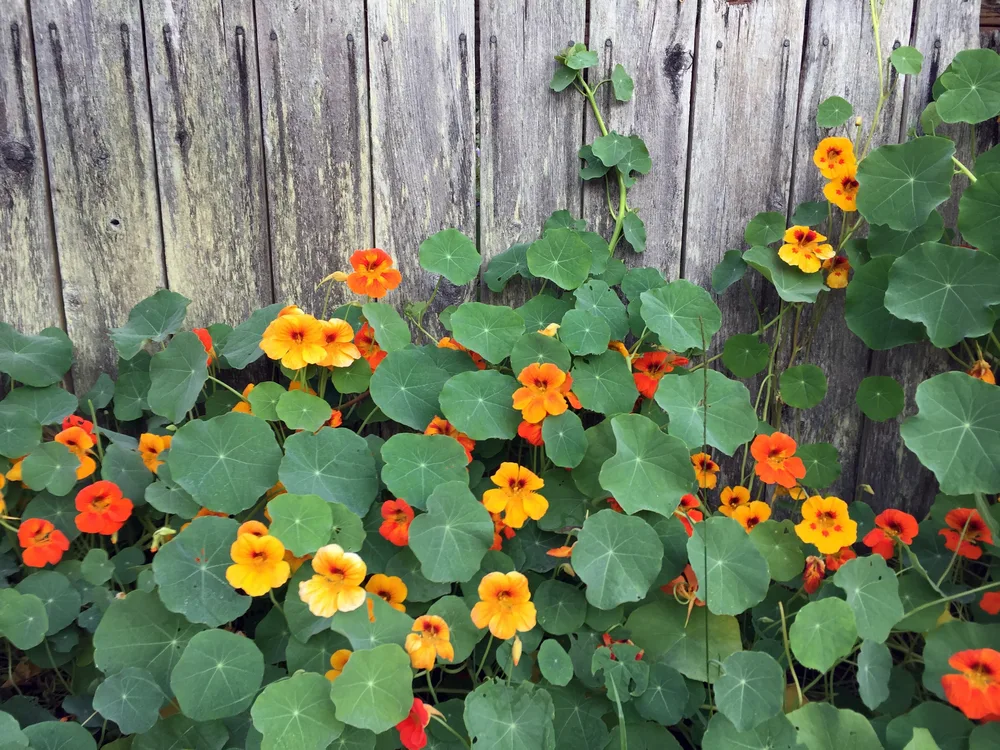
You may not immediately think of nasturtiums to cover a wall or fence. But there are a range of trailing and climbing nasturtium cultivars to choose from.
These not only provide plenty of coverage and color, they also provide edible leaves, flowers, and seed pods.
There are plenty of reasons to grow them in your garden.
23. Trumpet Vine (Campsis)
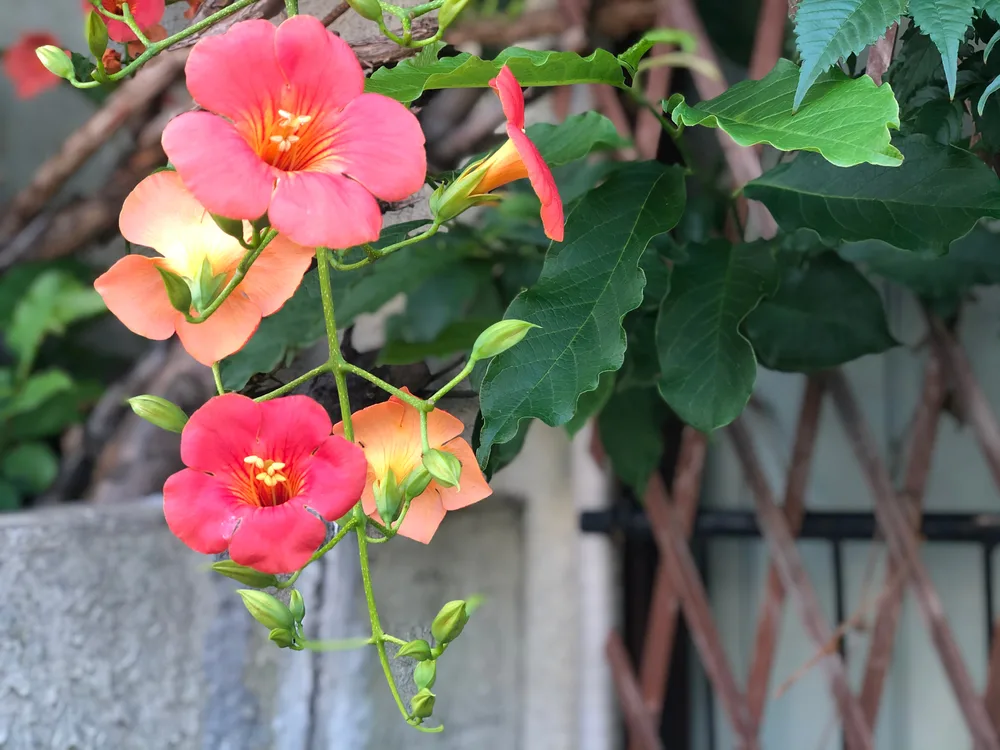
This North American native is a deciduous climber that grows to almost 40ft in length rather quickly.
It is in leaf between around June and October, and in flower in the late summer/ early fall.
It can grow in full sun, where there is sufficient soil moisture. And it is highly regarded as an extremely ornamental plant.
24. Virginia Creeper (Parthenocissus quinquefolia)
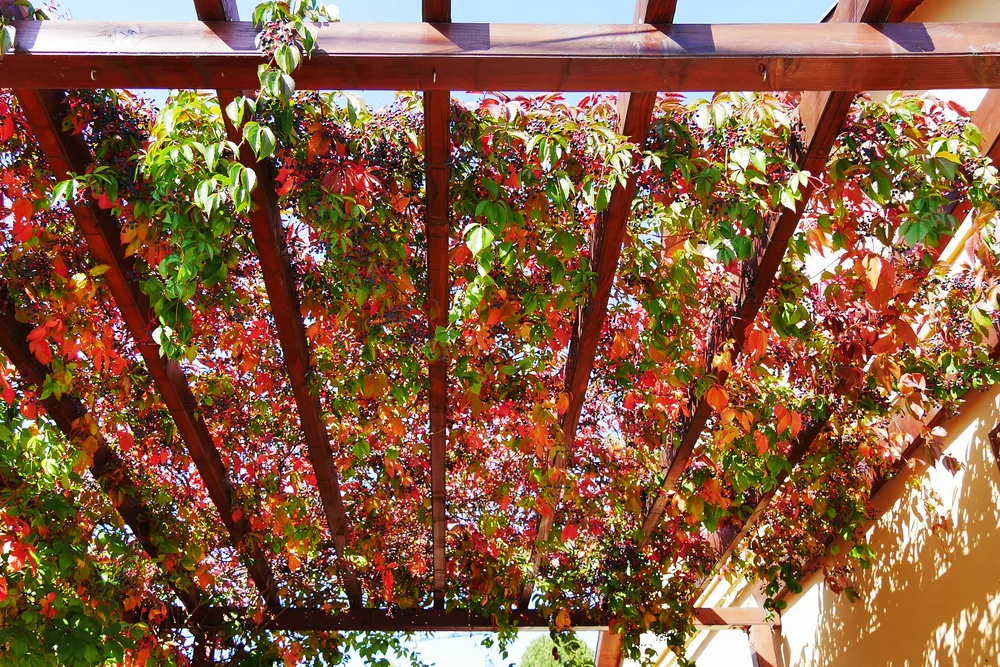
Also sometimes known as woodbine, this deciduous climber is a well known North American native, prized for its fast growth and its stunning fall foliage.
It is great for creating swift cover over an unsightly wall, and though it can cause problems when it reaches guttering, is often used to stunning effect on a range of different properties.
25. Wisteria (Wisteria Ssp.)
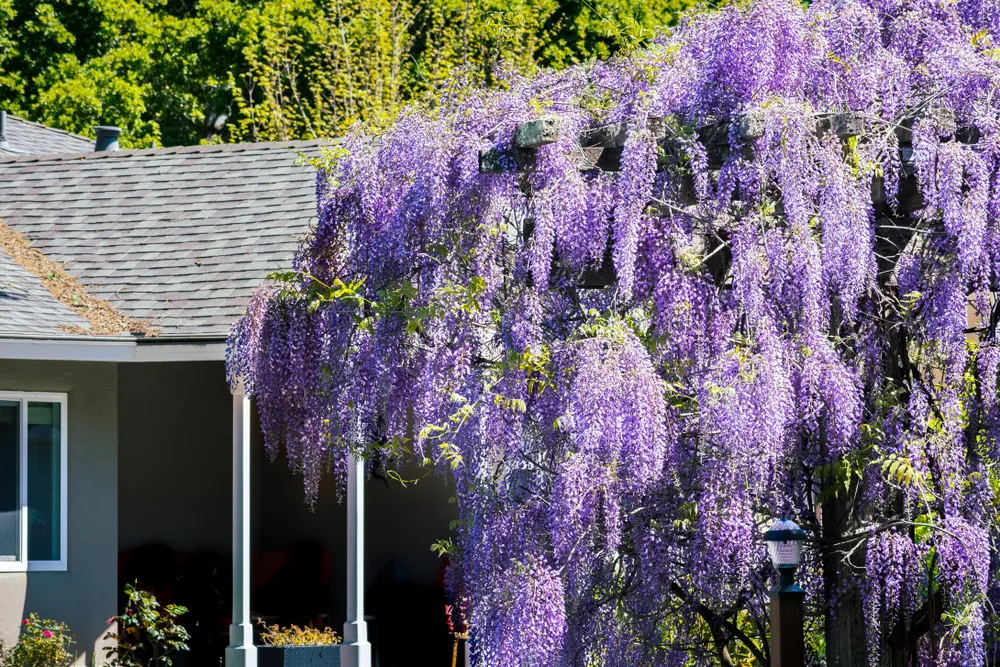
There are a number of different species of Wisteria that are wonderful floral climbers that work well on many sunny and free-draining sites.
American wisteria (Wisteria frutescens) is suitable for zones 4-8. Chinese wisteria and Japanese wisteria, related plants, are other climbers, suitable for zones 5-9.
Of course, these 25 options are just a small subset of the many climbing plants and flowering vines that you might be able to consider growing in your garden.

Get the famous Rural Sprout newsletter delivered to your inbox.
Including Sunday ramblings from our editor, Tracey, as well as “What’s Up Wednesday” our roundup of what’s in season and new article updates and alerts.


